We arrive in Tbilisi after flying via Montreal and Paris.
For our first few days, we check into the Fabrika. It’s a hostel, but also has private rooms.

The Fabrika is in an old Soviet-era clothing factory.
The graffiti on this building is deliberate. But just about every available surface in Tblisi is covered with graffiti. Seems to be a general Euro affliction to deface all of your elegant old buildings with spray paint.
It’s very lively at night.
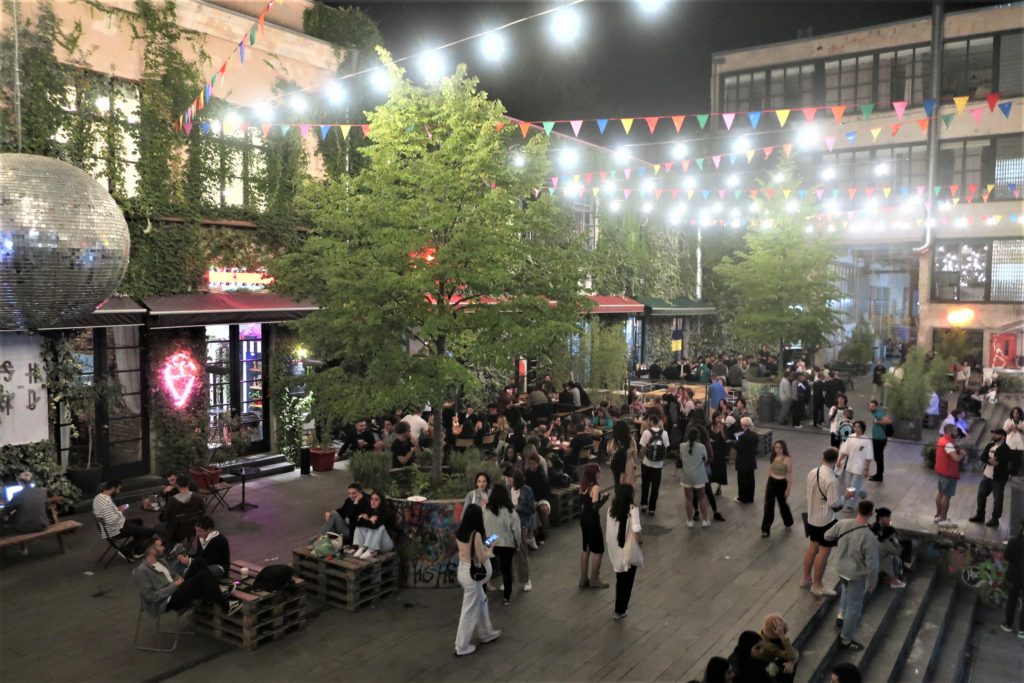
We spend the first few days gently coming down from jet lag. We visit some museums and sightsee at our leisure.
As in most cities that have a Metro, in Tblisi the underground is the best way to get around.
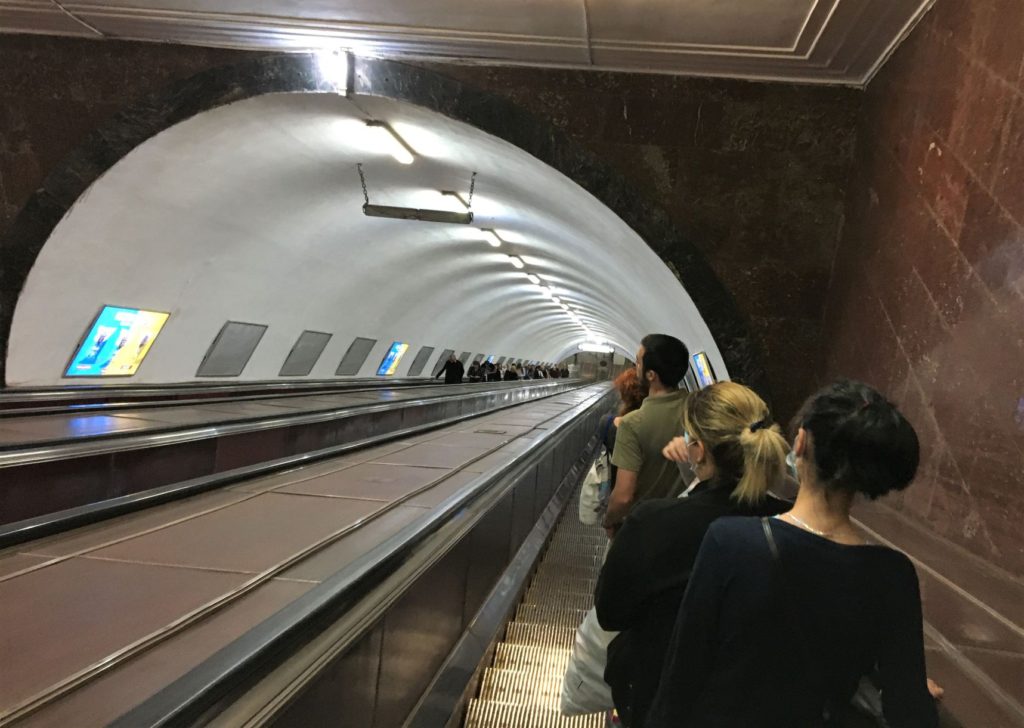
Built in the Soviet days, it’s a bit shabby but does the job well. And it’s cheap. Hey, compared to the O-train, it’s a model of convenience and efficiency.
The Old Town is the oldest part of Tblisi. It’s full of winding alleys and quaint houses in various states of either full restoration or complete decay.
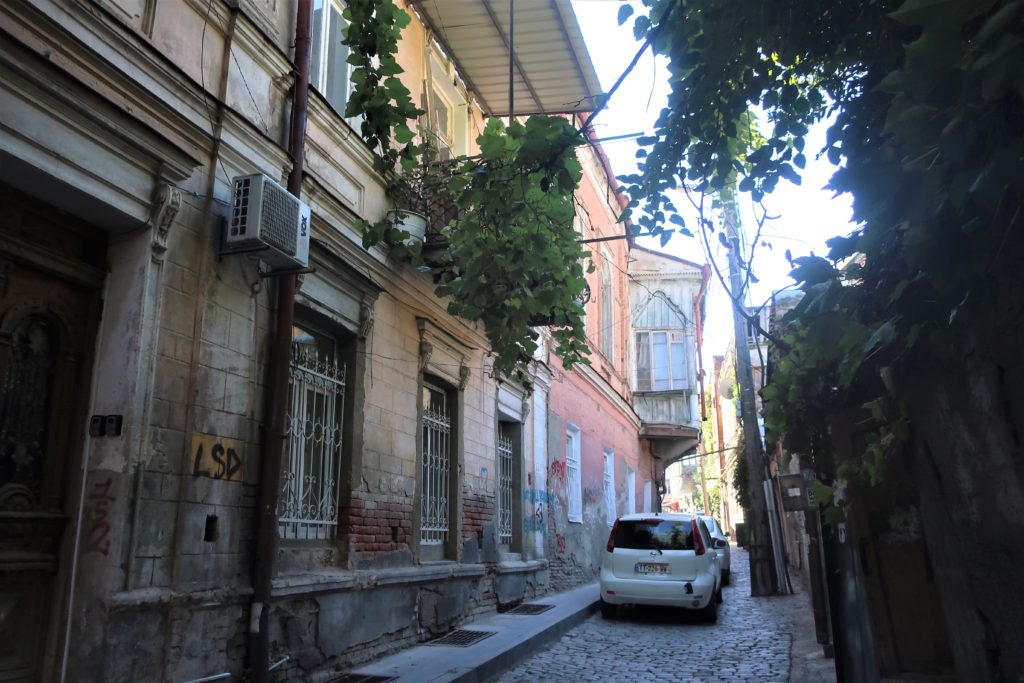
Tblisi is full of small hole-in-the-wall shops selling fruit, vegetables, and everything else. (SPAR mini-marts are sprouting everywhere like mushrooms, however. No doubt these tiny shops are doomed.)
Maria purchases a churchkhela. They look like candles, but they’re walnuts dipped in syrup made from grape juice.

Lots of sidewalk vendors as well.
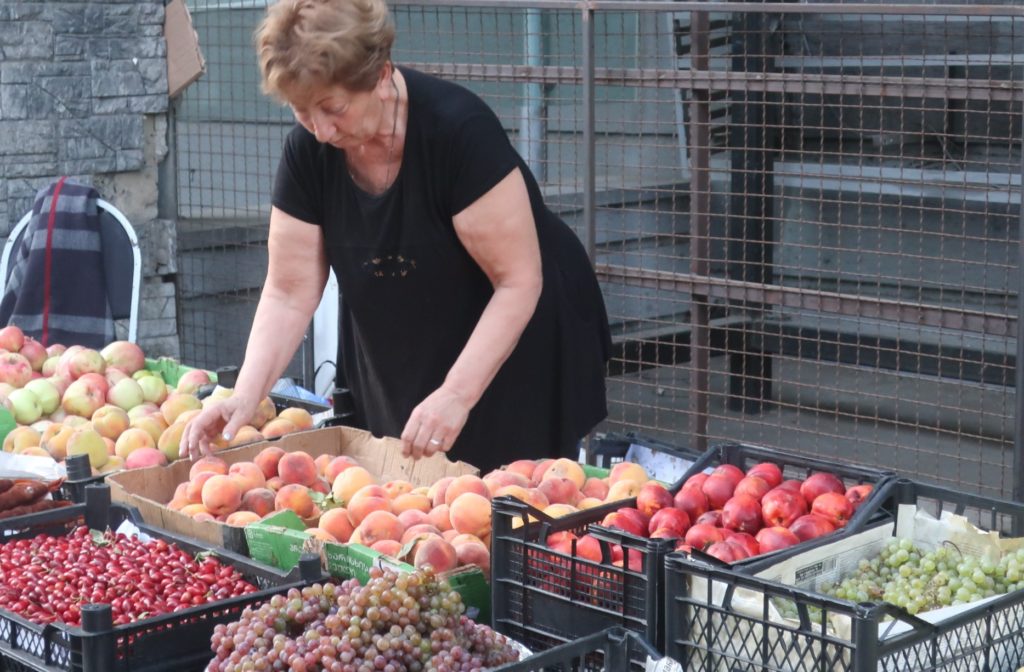
There are beggars on the street, too. Probably fewer than in downtown Ottawa, though.
This is the Anchiskhati Basilica, the oldest church in Tblisi. Like, 6th-century-AD old.
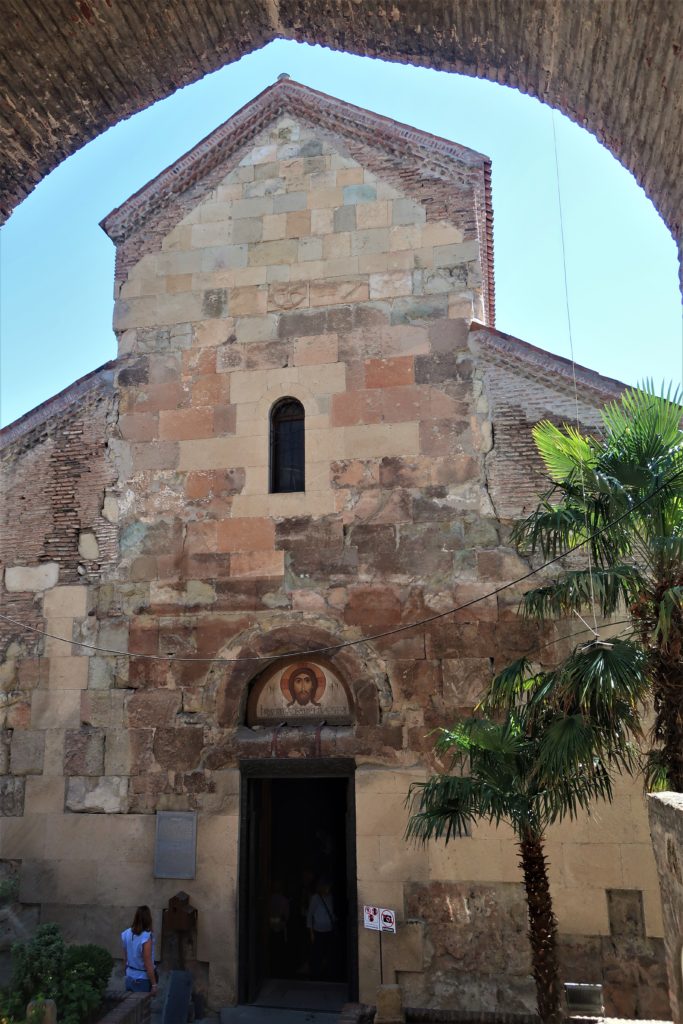
We cross the Peace Bridge over the Mtkvari river.
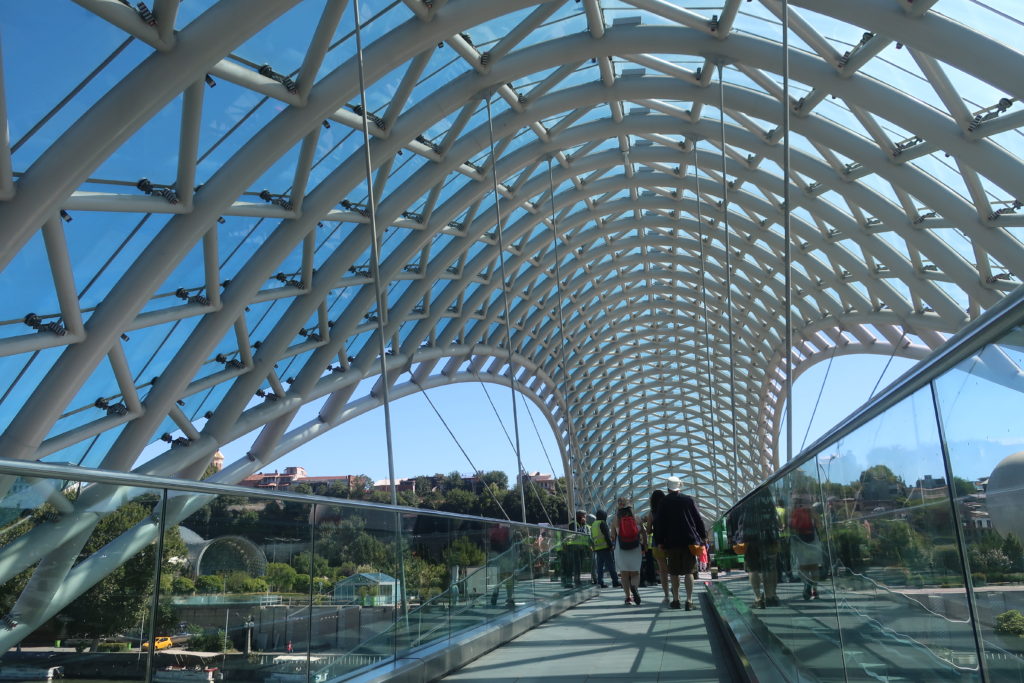
The Mtkvari is the main artery of Tblisi.
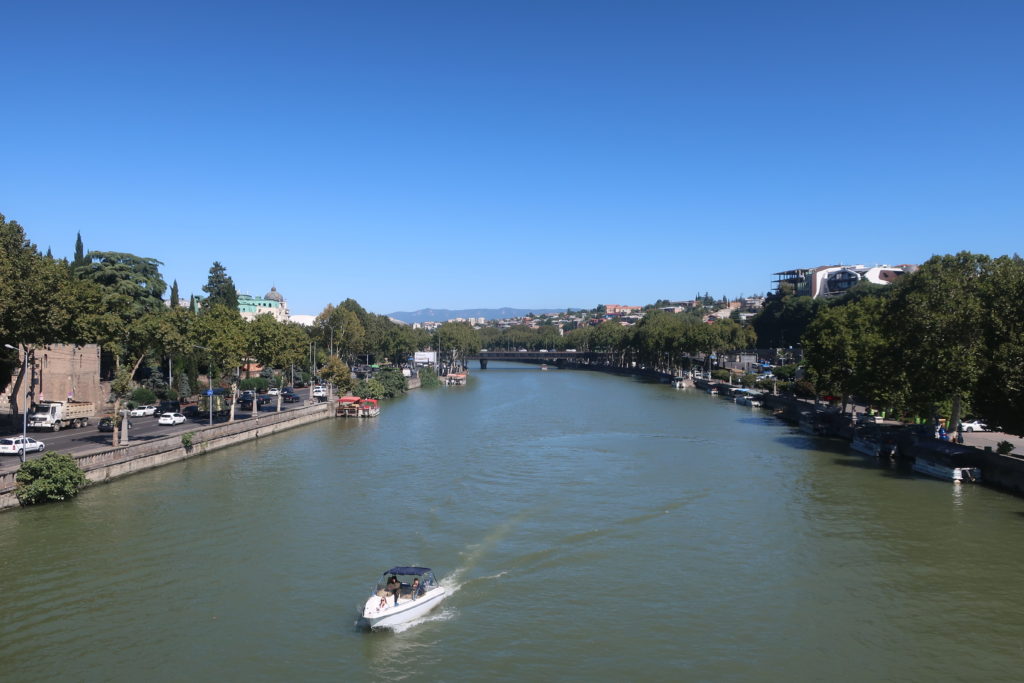
It’s also difficult to pronounce.
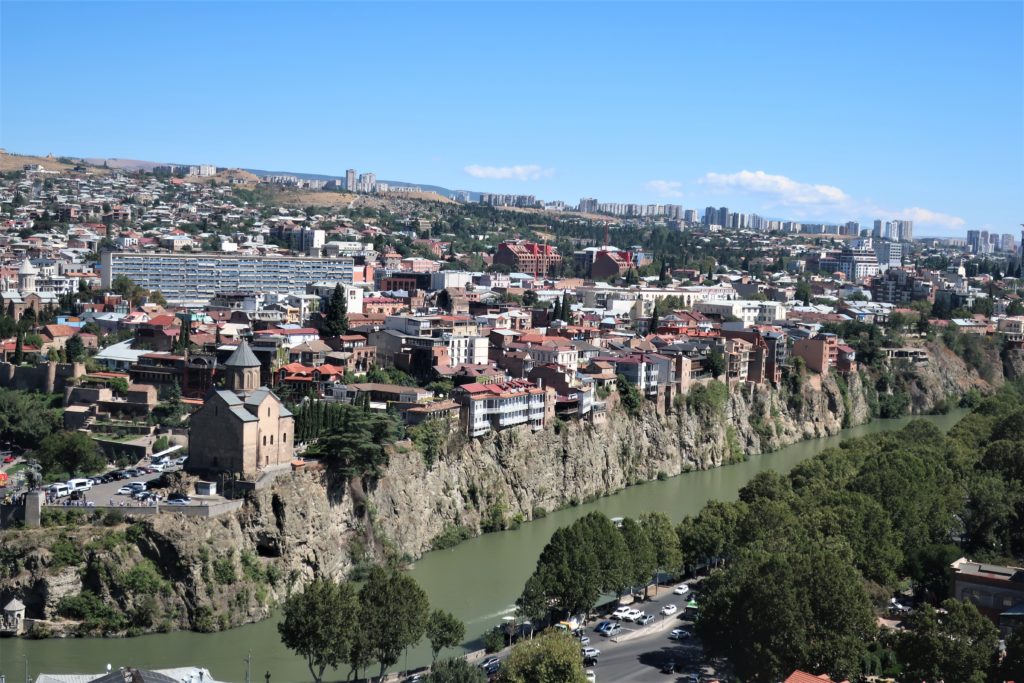
Here’s a view from the Narikala Fortress.
Some typical Georgian food. The pastry with the cheese and egg in it is an adjaruli khachapuri. The dumpling thingies are called khinkali. The soup is a concoction of beef, vegetables, and garlic. All washed down with a glass of tasty Georgian white.
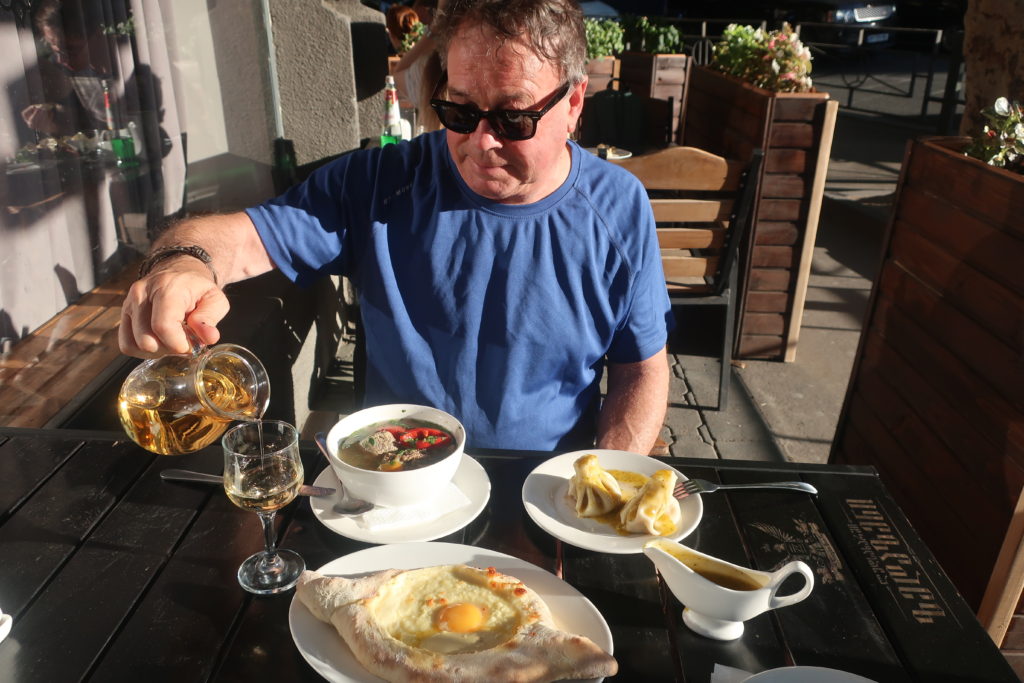
Sight or Insight of the Day
Tblisi is typically third-worldy in the great number of stray animals in the streets. But there seems to be a campaign to collect strays, spay/neuter them, treat any medical conditions, then release them with a plastic tag in their ear.
They’re very friendly. I don’t think anyone mistreats them, unlike other places where strays are starving, diseased, and despised.
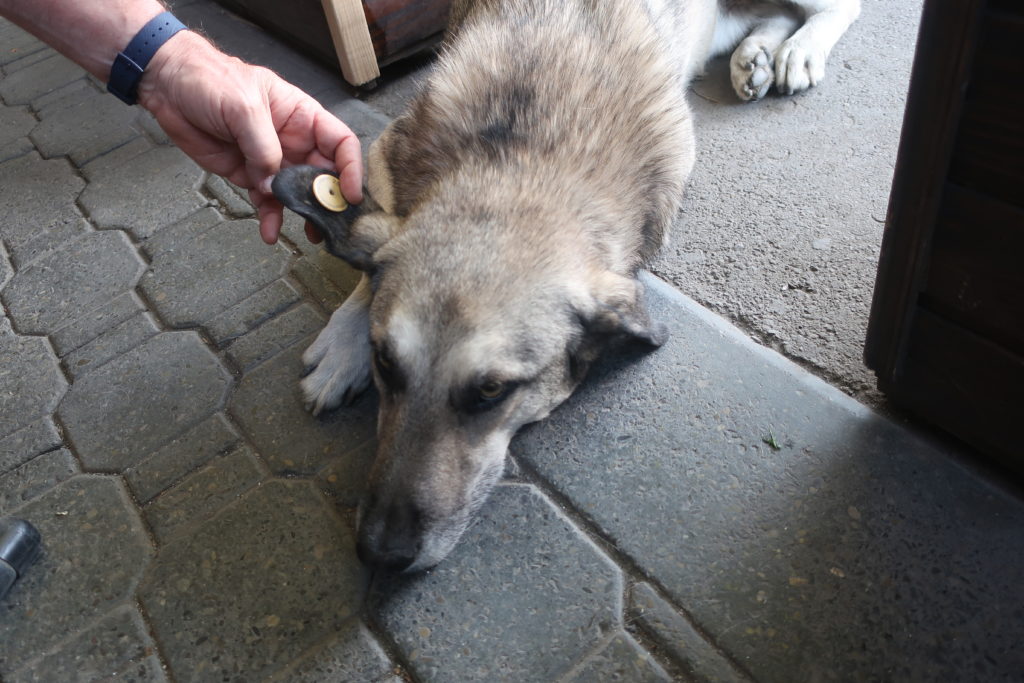
I can’t understand why the authorities don’t encourage individual people to actually adopt individual dogs. They’re extremely good natured (the dogs, that is.) However unthreatened they may be, road traffic is always a hazard.
If we lived here, I’m sure we’d have a houseful of mutts.
